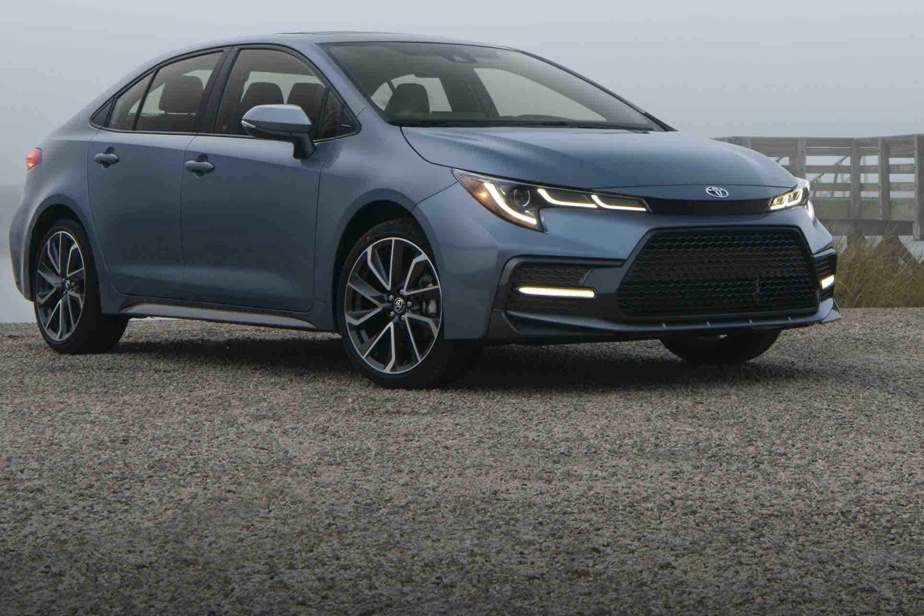(Kabul) “The most fantastic of cars”: in Afghanistan, drivers have a real passion for the Toyota Corolla which, thanks to its robustness, has conquered the country’s poor roads and survived the years.
A humble Japanese car renowned for its reliability, the Toyota Corolla is considered the most popular car in the world, with more than 50 million units rolling off the production line since 1966.
Rugged, simple and affordable, it’s perfectly suited to a country with bumpy roads where repairs depend on dwindling supply chains and where decades of deprivation have developed the art of DIY.
“These cars have always been there for people. If you travel with these cars, they can take you anywhere,” says mechanic Mohammad Aman.
“The Corollas are fast, their bodywork is resistant, they work well,” praises this 50-year-old to AFP. In comparison, other brands are as solid as “paper”, he argues.
Tributes to the brand flourish on vehicles covered with stickers in English such as “Happiness is a Toyota feeling” or “Beautiful Corolla” (Magnificent Corolla).
The model gradually replaced the Russian brand Lada which dominated the Afghan market until the withdrawal of Soviet forces from the country in 1989 and the collapse of the USSR.
Since then, the Corollas have crossed the history of the country. When Washington launched airstrikes after the 9/11 attacks, Taliban founder Mullah Omar fled his Kandahar haven in a white Corolla.
She was buried in 2001, but was triumphantly unearthed last summer, “still in good condition”, a Taliban government spokesman said. “It should be publicly displayed as an ‘important historical monument’”.
During the twenty years of Taliban insurgency, the Corolla became their vehicle of choice. Inexpensive and unnoticed, they were loaded with explosives to rush their targets.
Particular enthusiasm
Today, it is common to see large families crammed into the cabin and the passengers far outnumber the available seats.
“In Afghanistan, people don’t care much about standards,” notes Azizullah Nazari, a car dealer.
The 39-year-old sells imported Corollas ranging from $1,500 to $14,000, many of which appear to have taken a circuitous route to arrive in the country.
Like this immaculate white model that seems to come from Canada. Its interior is lined with Korean newspaper and its license plate is Ghanaian. Another model has a sticker on the bumper of an American university, while another has the coat of arms of a district in central Germany.
But all of their roads lead to Afghanistan, where “people have a particular fondness for Toyota,” insists Nazar.
The brand is indeed ubiquitous and particularly popular with taxi drivers driving often dented models. It is also not uncommon to see one of these cars, launched in the middle of a race, overtake a 4X4 on a mountainous uphill road.
” Ultra fast “
In Shuhada-e Salehin, in the capital’s largest repair market where a jungle of spare parts is piled up, Corollas are also praised for their day-to-day reliability.
“Some people’s vehicles are simple, but others have a passion for making them whimsical,” observes mechanic Aman.
Stuck in engine grease, his co-workers peek under the hood of an incredibly battered 1991 model. Admittedly, the paint is cracked, but the “fantastic Corolla” sticker stuck to the glass remains, although chipped.
“Toyota super-fast. The best and most fantastic car in the world. Suitable for all conditions”, boasts the model next door.
Kabul taxi driver Naqeebullah, 27, who drives a sun-bleached Corolla three years his senior, sums up the sentiment of many drivers.
“Not all the cars were satisfactory, with the exception of the Toyota Corolla,” he explains while waiting for customers.
A prayer card hangs from his rear-view mirror that reads, “Glory to him who enslaved us to this mode of transportation.”
